|
You’d never know it was down there. The spiky ocotillo, prickly pear and clumped agave scatter around this northern stretch of the Chihuahuan Desert, extending south into Mexico farther than you can drive in a day. 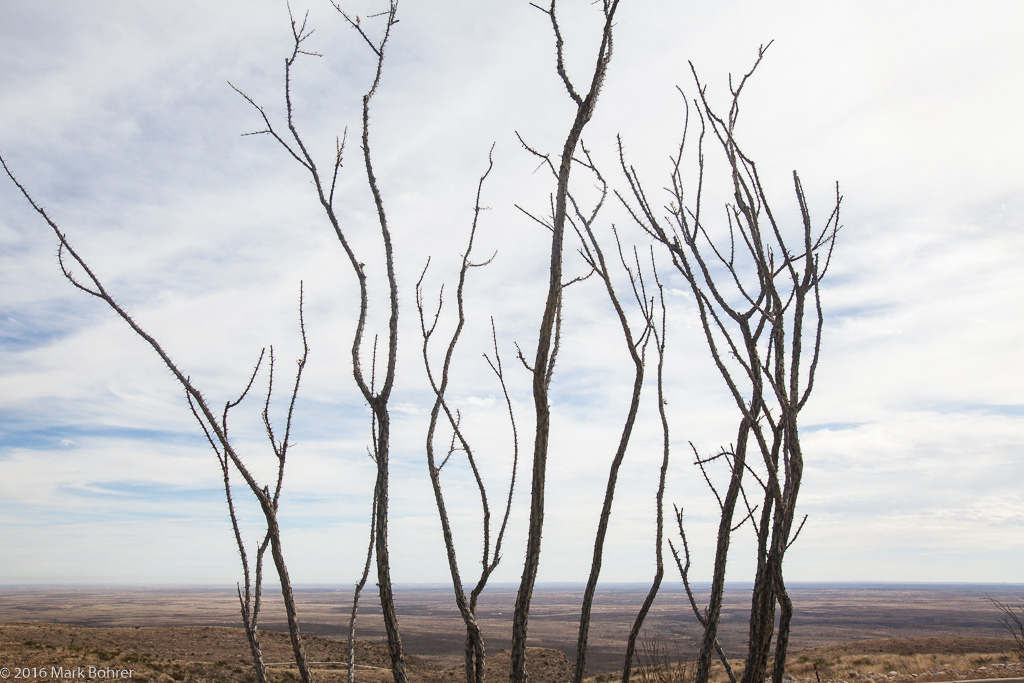 Ocotillo and sky above Except for the vacation car traffic (light in winter), there’s no indication of a 120-mile cave buried half an Empire State Building under your shoes. It’d take almost two weeks to walk it all, longer if you stumbled into any holes. And that’s just the explored and mapped part. Cracks in the Reef Originally, Carlsbad was a reef on the edge of an inland sea. Over geologic time, marine animals deposited skeletal calcium carbonate (limestone) miles deep. As continental uplift occurred, the water drained and the top layers rose and eroded away. Corrosive acidic chemistry carved out passages from limestone cracks at the level of the water table. Mineralized ground water seeped down into those passages, dripped and evaporated, leaving stalactites, stalagmites and other speleothem features in the caves. Getting Down In the late 1800s, visitors and cave ‘discoverer’ Jim White would sway down from the cave entrance in a carefully-lowered bucket. Those buckets likely smelled a bit, since they were regularly used to harvest bat guano from the caves. The first staircase was built from the cave mouth down to the Bat Cave in 1925, making it a little easier to go down. But you still had to descend the 754 feet to the cave entrance on foot. 1932 saw the installation of the first elevator from the surface, eliminating that hike. You can still walk down to the mouth if you want to (and it may be necessary if the elevator is out of service – call in advance to find out). Since only 8 people are allowed in the elevator at a time, we arrived early to beat the crowds and lines. The cave has only been known to modern humans for a bit over 100 years, but there’s a a fair amount of underground development. Just off the elevator, you’ll walk past a snack bar (gee, really?) and restrooms. The restrooms are a nice convenience, but they’re by the elevator only. Average winter highs are in the mid-50s, so you won’t get cold. 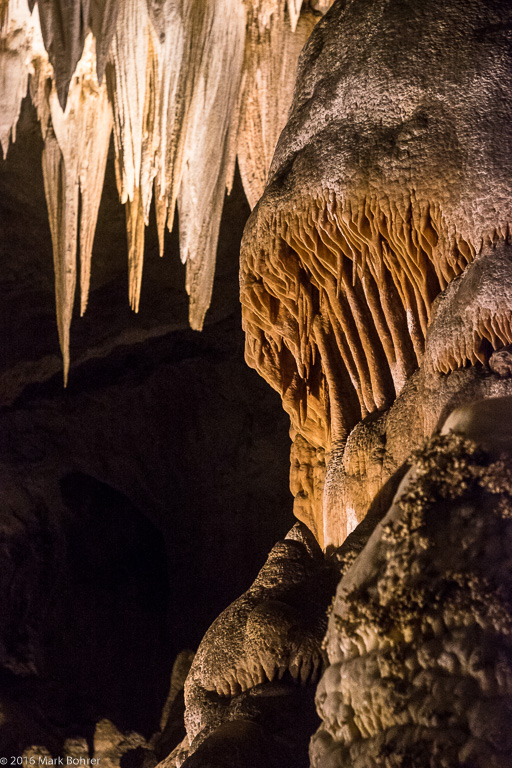 Stalactites and Teeth Big Room The Big Room trail is paved, railing-lined and lit. It’s a bit brighter than a movie theater, with pools of light every 30 feet or so. You can walk it without a ranger. Most other trails are unpaved, unlit and lack railings, requiring a ranger-led tour to explore safely. Wanting to photograph at our own pace on this first visit, we chose the self-guided Big Room trail. No Winter Bats – Lit-Up Spiky Features The bats are gone in winter, flying south to follow the food supply. So we had just cave features to shoot. Lighting has been positioned for selective lighting of speleothems. 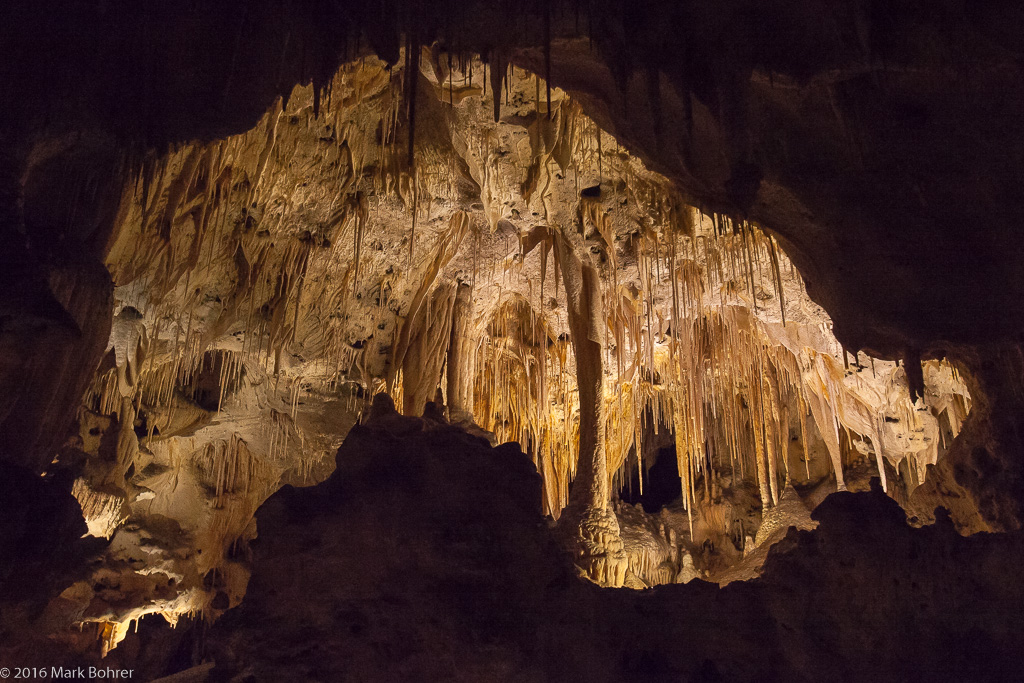 Looks a little like Andreas Vollenwieder’s Caverna Magica cover I had plenty of dramatic shadows and highlights to work with – but they’d been chosen for me by the park’s lighting designer. There are domes, spiky chandeliers, teeth and other crazy formations. Floor-standing stalagmites in particular seem to defy gravity, but ceiling drips cause them to accumulate from the bottom up. 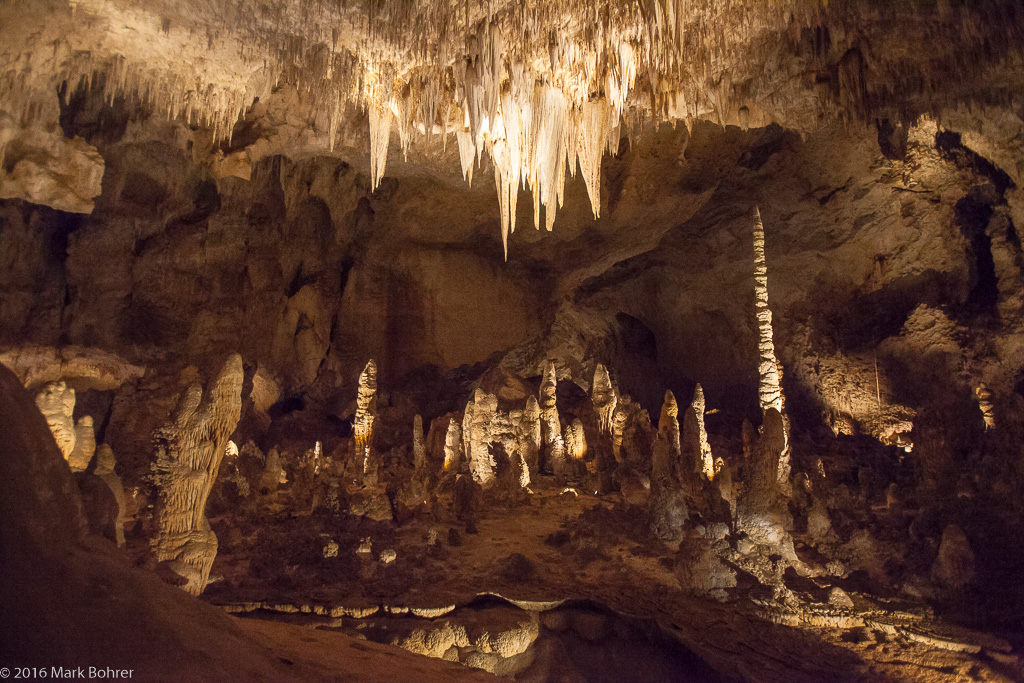 Water reflection below We wound around underground pools and spiky, toothy limestone under 300-plus foot ceilings for a couple hours. After awhile, features started looking the same. Fortunately, we were near the end of the loop trail by then, and the wait for the elevator wasn’t bad yet. We were out and feeding our dogs at the RV less than 3 hours after we started. 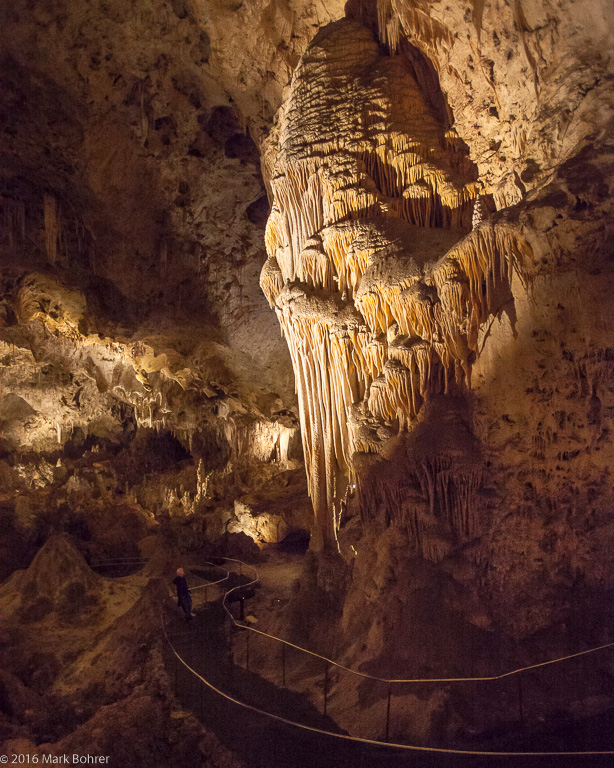 Pondering the teeth Try To Find a Restaurant Lasagna at dinner the previous evening had been excellent, so we returned to Carlsbad’s Trinity Restaurant and Hotel for a second helping. Unfortunately, the chef added too much garlic to the spaghetti and meatballs, masking other flavors. We’d had a similar one-flavor problem at YellowBrix a couple nights before. The next morning, the Blue House Bakery and Cafe was out of pastries by 11am (don’t sleep in – get there early). So I can’t make a positive restaurant recommendation from personal experience. 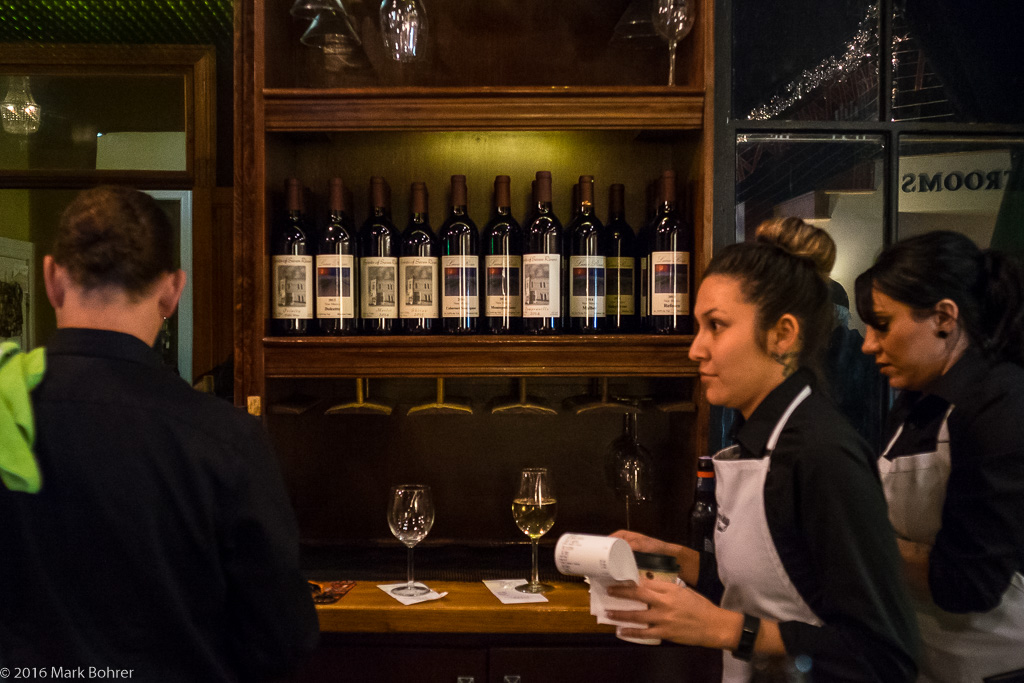 Wine at Trinity Restaurant, Carlsbad Shot Notes I used Canon’s 24-70mm f/2.8L on an EOS 5D mk II dSLR and Leitz 50mm f/1.4 Summilux on a Fuji X-E2 mirrorless (equivalent to 75mm on a full-frame camera) for everything. I set both cameras to 6400 ISO, and shot mostly wide open or mildly stopped down to f/5.6. Sometimes I had enough light for f/7.1. I hadn’t wanted to bring a tripod for other visitors to trip over in a dimly-lit area, so I braced against the railing when I could and held my breath as I squeezed the shutter. I won’t be enlarging most of these to 10×19 or larger, but pictures were sharp enough for online display. With the wild distance variations and huge cavern size, I didn’t even pull out a flash. When another visitor asked me to take her picture, her camera was set for flash fill. Problem was the flash lit her brightly, but the background cavern features were pretty dark. Unless you have a permit to place lots of supplemental lighting like Ansel Adams wanted to do in 1941, flash won’t help. I did include human figures in a few pictures to show the size of the place. Rangers told me color temperature of the lights is 2700° K, but I found myself wanting to adjust shots warmer to 3310°. Different cameras’ auto white balance will render pictures differently, so if you’re shooting with several cameras you’ll want to adjust pictures for uniform color. More Information Frequently Asked Questions, Carlsbad Caverns National Park, accessed from https://www.nps.gov/cave/faqs.htm By the Numbers: Carlsbad Caverns National Park, accessed from http://tinyurl.com/zjxrl2g What’s the difference between stalactites and stalagmites? accessed from http://tinyurl.com/n8sm4ev Ansel Adams and Mary Street Alinder, Ansel Adams: An Autobiography, Little, Brown and Company, Boston. 1983. |
(408) 483-3782
Curious about how to shoot ruins?(408) 483-3782

Hello.This post was extremely interesting, particularly because I was looking for thoughts on this topic last Thursday.